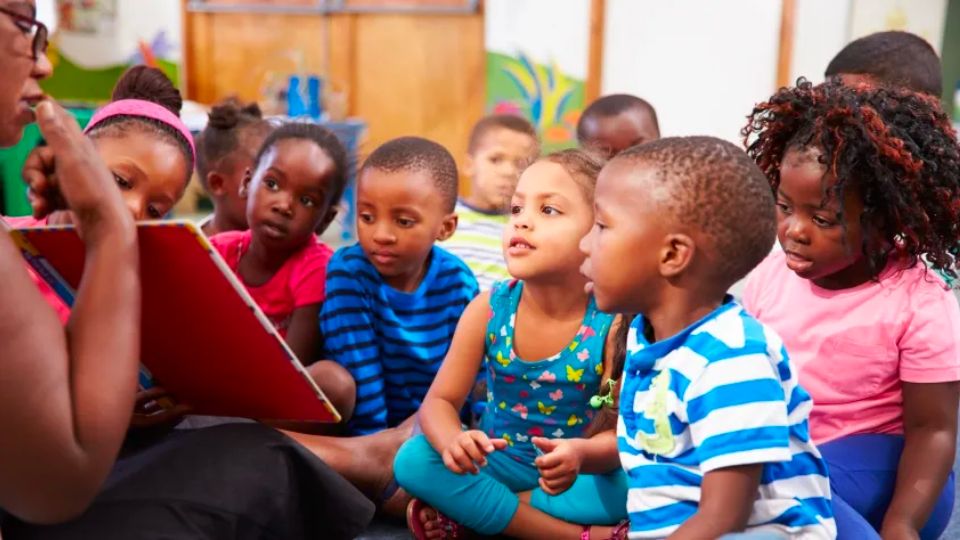A recent national report has revealed that black children in Michigan are significantly lagging behind their peers in terms of graduating high school on time, completing an associate’s degree, and achieving fourth-grade reading proficiency.
According to the Annie E. Casey Foundation’s Race for Results report, the academic performance of Black children in Michigan falls behind their peers across the country in every measured metric. The metrics encompass a wide range of data, covering early childhood, education, work experiences, family resources, and neighborhood context.
According to officials, a recent report has revealed a concerning trend across the nation, indicating a significant lack of support for families. This lack of support has resulted in poor outcomes for children from Black, Latino, and American Indian or Alaska Native backgrounds. According to report officials, the index in the report standardizes scores across 12 indicators that represent well-being milestones from cradle to career. These scores are then converted into a scale ranging from 0 to 1,000, allowing for comparisons and the identification of differences across states and racial and ethnic groups.
In the latest report, the 2024 index reveals the addition of a new demographic group – children of two or more races. This group now accounts for 5% of the child population in the United States. In Michigan, the scores by race were as follows: Black, 268; American Indian/Alaska Native, 565; Asian and Pacific Islander, 800; Latino, 479; White, 660; and two or more races, 515.
According to officials from the foundation, the highest index score was recorded among Asian and Pacific Islander children at 771. White children followed closely behind with a score of 697, while children of two or more races had a score of 612. The scores of Latino children, American Indian or Alaska Native children, and Black children were significantly lower.
Monique Stanton, president & CEO of the Michigan League for Public Policy, highlighted that although recent state budgets have shown improvement in funding for schools, this positive change follows a long period of disinvestment spanning several decades.
Also Read: Local School Districts Decide if and When to Call it a Snow Day
“In a statement, Stanton highlighted the detrimental impact of disinvestment in education, which has been further exacerbated by a legacy of discriminatory policies linked to housing, property tax limits, and local funding for neighborhoods,” Stanton stated. Black children in Michigan face significant challenges in their education. Years of inadequate funding have resulted in low preschool enrollment rates, limited proficiency in reading and math, high dropout rates, and low rates of post-secondary degree attainment.

A recent report, published on January 10th, indicates that there have been positive developments in certain aspects of Michigan. A recent report highlights the remarkable progress made by American Indian and Hispanic students in Michigan, who have outperformed their peers in terms of high school graduation rates. These students have shown significant improvements, surpassing both their fellow Michigan students and their national counterparts.
Michigan adults between the ages of 25 and 29 have exceeded the national average when it comes to earning an associate’s degree or higher. A significant disparity exists between the credential attainment rates of Black students and Michigan’s young adults as a whole. Only 20% of Black students were able to earn the credential, while the overall rate for Michigan’s young adults stands at 42%.
Michigan has witnessed a rise in the number of children residing in two-parent households, according to officials. These households, statistically speaking, tend to possess greater resources and enjoy more financial stability compared to single-parent households.
A recent report has revealed that the change has affected children from various racial and ethnic backgrounds. This includes Black, American Indian or Alaska Native, Hispanic, Asian and Pacific Islander, and children who identify as two or more races. The indicator of children living in two-parent households worsened, with white children being the only group affected.
In 2014 (Report), the foundation introduced the Race for Results index in a report, which was later updated in 2017 (Report). In the latest report, there is data available after the COVID-19 pandemic.
A recent report has put forward several recommendations aimed at improving child outcomes. One of the key suggestions is for Congress to expand the federal Child Tax Credit, while states are urged to expand the earned income tax credit. Additionally, policymakers are being called upon to develop targeted programs and policies to address disparities faced by children and young adults of color.



Leave a Reply